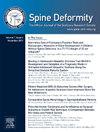成人脊柱畸形的使能技术。
IF 1.8
Q3 CLINICAL NEUROLOGY
引用次数: 0
摘要
本文分析了成人脊柱畸形(ASD)的使能技术,重点是优化安全性和教学。ASD的患病率正在上升,最近的技术进步可以使外科医生改善ASD患者的治疗效果,但每一种治疗都面临着特定的挑战。本文强调了有效技术整合的机会和潜在障碍,并评估了关键的使能技术,包括手术计划软件、机器学习、三维打印、增强和虚拟现实、患者专用仪器以及导航和机器人。本文章由计算机程序翻译,如有差异,请以英文原文为准。
Enabling technology in adult spinal deformity.
This review analyzes enabling technology in Adult Spinal Deformity (ASD), with a focus on optimizing safety and teaching. The prevalence of ASD is rising, and recent technological advancements can empower surgeons to improve outcomes for ASD patients but also each comes with specific challenges. The paper highlights opportunities and potential obstacles in effective technology integration and assesses key enabling technologies, including surgical planning software, machine leaning, three-dimensional printing, augmented and virtual reality, patient-specific instrumentation as well as navigation and robotics.
求助全文
通过发布文献求助,成功后即可免费获取论文全文。
去求助
来源期刊
CiteScore
3.20
自引率
18.80%
发文量
167
期刊介绍:
Spine Deformity the official journal of the?Scoliosis Research Society is a peer-refereed publication to disseminate knowledge on basic science and clinical research into the?etiology?biomechanics?treatment?methods and outcomes of all types of?spinal deformities. The international members of the Editorial Board provide a worldwide perspective for the journal's area of interest.The?journal?will enhance the mission of the Society which is to foster the optimal care of all patients with?spine?deformities worldwide. Articles published in?Spine Deformity?are Medline indexed in PubMed.? The journal publishes original articles in the form of clinical and basic research. Spine Deformity will only publish studies that have institutional review board (IRB) or similar ethics committee approval for human and animal studies and have strictly observed these guidelines. The minimum follow-up period for follow-up clinical studies is 24 months.

 求助内容:
求助内容: 应助结果提醒方式:
应助结果提醒方式:


